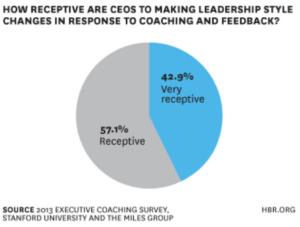While on the surface, it may seem that these two terms are interchangeable, there are in fact important differences, for you and for your team, between being a leader and being a manager. Understanding those differences is how you can step from one role to the other with distinction.
“Management consists of controlling a group or a set of entities to accomplish a goal. Leadership refers to an individual’s ability to influence, motivate, and enable others to contribute toward organizational success. Influence and inspiration separate leaders from managers, not power and control.” (Source)
The key difference between a leader and a manager is that a leader influences others to follow them and work towards their vision. A manager, by contrast, directs specific work activities, in effect telling people what is expected and how success will be measured. Both are necessary to accomplish goals and turn a vision into reality.
“If we look at the likes of Mahatma Gandhi, Nelson Mandela, and Martin Luther King Jr., it is easy to see that they did not do anything to other people. What they did do was set very clear goals for themselves, and motivated themselves to struggle endlessly towards achieving them. In doing so, they became powerful role models, and that in turn motivated and inspired others to join their journey.” (Source)
What is leading?
Leading is about influencing others to do what needs to be done, in pursuit of a common objective. That objective is created by leaders: by seeking to change how things are done, to clarify the path to achieving said objective and to motivate people to work towards this achievement.
Other ways to describe leadership:
- Articulate an objective or goal, inspiring change in vision or thinking;
- Work diligently on this objective;
- As a role model, to influence others to embrace that objective or goal, and ultimately achieve it;
- Inspiring people to reach above and beyond the minimum standard with their efforts, often by example.
What is managing?
Managing is less about setting a direction and influencing others than about following a process set out and ensuring that others know how to do so as well.
Other ways to describe management:
- Planning, organizing and ensuring that the elements, both human and otherwise, needed to achieve a specified goal are in place;
- Following established processes within the organization and problem-solving issues with workflow, when necessary.
Another way to see it? Look at managing as counting by reviewing data, while leading is more like creating using abstract thinking. Ultimately, being a leader isn’t always a role defined by an organization: you can have natural leaders within a group, the person to whom others gravitate for inspiration or advice. It’s not about the authority that is bestowed on a person through position or a title. Being a leader doesn’t mean that they have control, but it does mean that they have influence.
For many, management roles are the first step to leadership. There are skills that are innate in leadership, but many are learned: listening, being authentic, creating a safe space for people to work, and more. But remember this too: leaders can’t lead if there aren’t people around who can interpret and action their vision. That’s where solid management skills come into play. If you have both, you’re ahead of the game!





